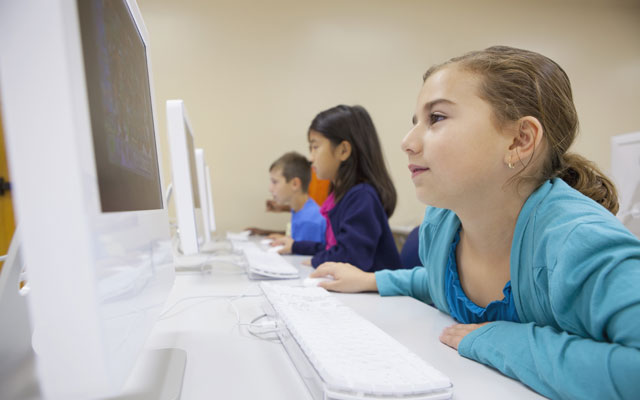Today’s technology means that education can be tailored to the specific needs of each child. Idaho is leading the way in adopting these types of innovations with its statewide initiative to integrate Khan Academy videos into the classroom.
The Khan Academy is an online-based learning tool that creates a self-paced environment. Students listen to lectures and engage in interactive activities geared toward content mastery—children must master concepts before moving on to future concepts. Students who have difficulty mastering a particular concept can re-watch lectures and move through content at a slower pace, and those who easily grasp a concept can move on quickly.
Khan Academy also uses a “flipped classroom” approach, which means students do homework in class, gaining from one-on-one guidance from the teacher, and watch lectures virtually at home.
Idaho has established the first statewide pilot of the Khan Academy. Thanks to donations from the J. A. and Kathryn Albertson Foundation, nearly $1.5 million in grants will be awarded to 47 Idaho schools for technology, professional development, and research. With this private donation, 10,000 students in nearly four dozen schools across Idaho will be using the Khan Academy in the 2013–2014 school year.
The Khan Academy believes that the focus on mastery learning allows students to move at their own pace, creating ownership and responsibility in learning.
The Khan Academy began when Sal Khan, an MIT and Harvard graduate, began recording math lectures and delivering them to his cousin who was struggling with traditional learning techniques. He eventually began posting the lectures online—after getting over his initial concern that “YouTube is for cats playing pianos, not serious mathematics.”
But it soon became clear that it was more than just his cousins watching his videos on YouTube. As demand for the videos grew, Khan decided to create the nonprofit Khan Academy. Today, Khan Academy is used in 20,000 classrooms around the world. Over a billion exercises have been completed on the site.
“In a traditional classroom, you group kids by age,” Khan explained in March. “You push them through in a sort of assembly line, factory model.… At different points in time, usually state-mandated, you kind of try to apply information to them—some kids get the information, some kids don’t—and if a kid gets a ‘C’ on say, basic exponents…you move on to negative exponents or fractions or something more advanced, even though you know that they had weaknesses in something more basic.”
But the Khan Academy model changes all of that with competency-based, self-paced learning:
If you’re confused about something, if you want to review something…these videos are there for you.… The first time you learn something, it’s stressful to have someone say, “Do you understand this now?” Or a lot of times you might be in seventh or eighth or ninth grade, and you forgot some concept from fourth or fifth grade.… You can now review it at your own time and pace.
Idaho is embracing new technologies such as the Khan Academy, enabling parents to engage more with their children’s schoolwork and enabling teachers to work one-on-one with each individual student—where the student is in the learning process. In so doing, they’re moving away from the assembly-line model of education and toward more customized options for children in the state.
